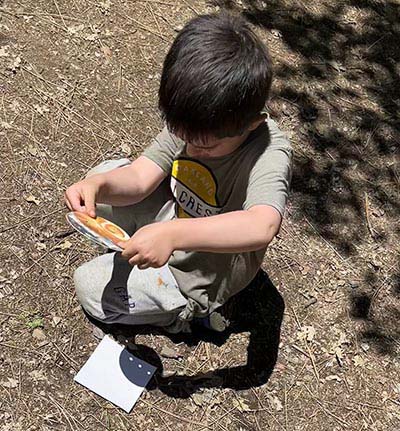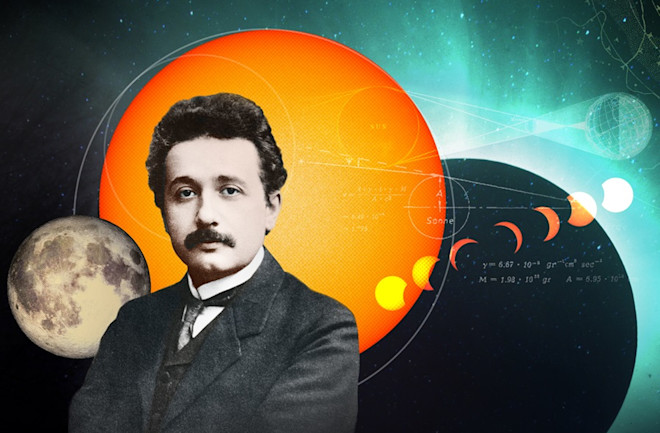
The 2024 Solar Eclipse: A Learning Experience for All Ages!
Share
The 2024 Eclipse is taking place on April 8, 2024. Will you be ready?
It isn't just a STEM event. It's a every human and learner event!

What is the eclipse?
An eclipse happens when one celestial body, like the moon or a planet, blocks the light from another celestial body from reaching our view here on Earth. It's like a cosmic game of hide-and-seek!
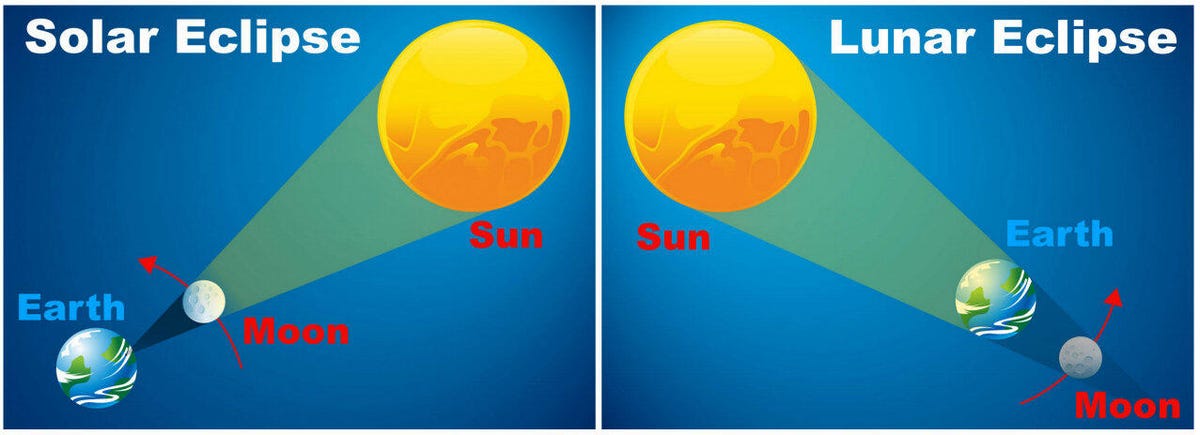
There are two main types of eclipses we can see from Earth:
- Solar Eclipse: This occurs when the moon gets between the sun and Earth, casting a shadow on Earth's surface. During a total solar eclipse, the moon completely blocks the sun's light, making the sky dark for a short time. It's important to never look directly at the sun during a solar eclipse, even for a moment, as it can damage your eyes.
- Lunar Eclipse: This occurs when Earth comes between the sun and the moon, and the moon gets covered in Earth's shadow. The moon usually turns a reddish color during a lunar eclipse because some sunlight filters through Earth's atmosphere and bends around the Earth, reaching the moon. Unlike a solar eclipse, it's safe to look at a lunar eclipse with your naked eyes.
The upcoming eclipse on April 8, 2024, will be a solar eclipse. The path of totality, where the sun will be completely blocked by the moon, will only be visible from certain locations on Earth.
When does it occur and what am I looking for?
The total solar eclipse on April 8th, 2024, is a special celestial event! Here's a breakdown of what to know:
When to Look Up:
The exact timing of the eclipse will vary depending on your location. However, the entire event will occur on April 8th, 2024. If you're unsure about the specific timing in your area, there are resources available to help you pinpoint it. Here are a few suggestions:
- Online Resources: Websites like NASA's Eclipse website (https://science.nasa.gov/eclipses/future-eclipses/eclipse-2024/) offer interactive maps that predict the path of totality and timings for different locations.
- Local Astronomy Clubs: Many astronomy clubs host public viewing events for eclipses. Reach out to local astronomy clubs to see if they're organizing an event and can provide specific timings for your area.

What You'll See (During Totality):
The key thing to remember is that you can only witness the most spectacular part of the eclipse, the total phase, from a specific path on Earth called the path of totality. This is where the moon completely covers the sun, briefly turning day into a twilight-like darkness. During totality, you might see:
- The Sun's Corona: The sun's outer atmosphere, usually hidden by the sun's bright light, becomes visible as a faint white halo around the dark moon.
- Solar Prominences: These are fiery loops or eruptions of gas from the sun's surface, which can be quite dramatic to see.
- Planets and Stars: With the sun's light blocked, some brighter stars and even planets like Venus might become momentarily visible.
Important Safety Note:
Never look directly at the sun, even for a brief moment, during a solar eclipse. This can cause permanent eye damage. Special eclipse glasses with certified solar filters are the only safe way to view the sun directly during the eclipse. Regular sunglasses or looking through a camera/phone is not safe.
What You'll See (Outside the Path of Totality):
If you're not located within the path of totality, you won't experience the dramatic darkness. However, you can still witness a partial eclipse where the moon covers a portion of the sun's disc. It's crucial to use safe viewing methods like approved eclipse glasses even for a partial eclipse.
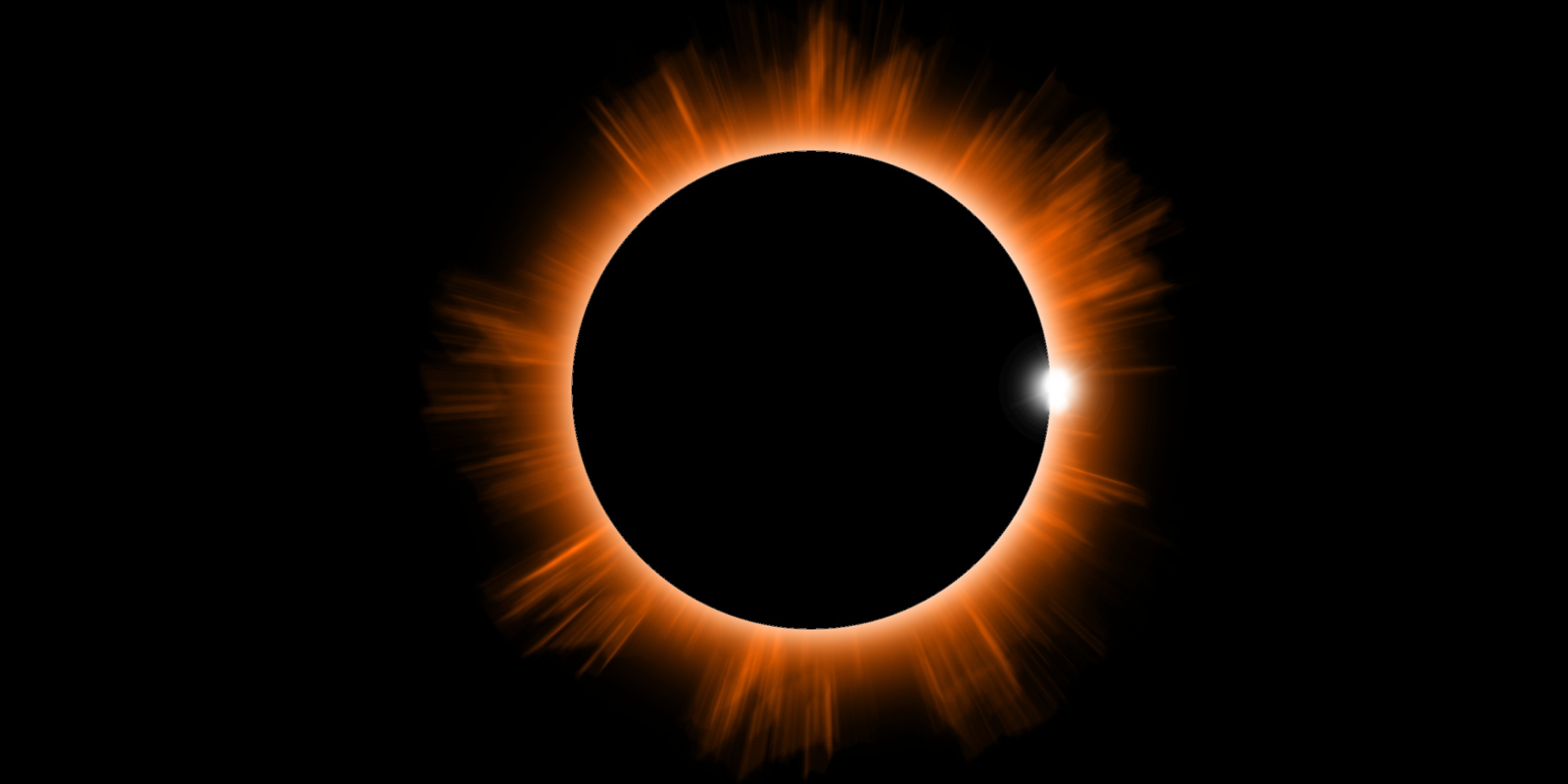
Ideas by grade level and discipline
Elementary (K-5)
Safety First: As always, safety is paramount. Reinforce throughout these activities that looking directly at the sun, even during an eclipse, is harmful. Students should only observe the eclipse with approved solar eclipse glasses or through safe indirect viewing methods.
General Cross-Curricular Activities (Adaptable across subjects):
- Moon Phase Flipbook (Art/Science): Combine art and science with a creative flipbook showcasing the different moon phases. As students learn about the moon's role in the eclipse, they can connect it to the moon phase cycle. Let them decorate each phase and write a short description on the back.
- Eclipse Shadow Play (Science/Drama): Turn down the lights and transform your classroom into a mini planetarium. Use a flashlight (sun), marble (moon), and ball (Earth) to demonstrate how shadows form during an eclipse. Students can take turns manipulating the objects and narrating the celestial dance.
- Eclipse Story Time: Read children's books about eclipses, the moon, and Earth. Discuss the story and answer any questions they may have.
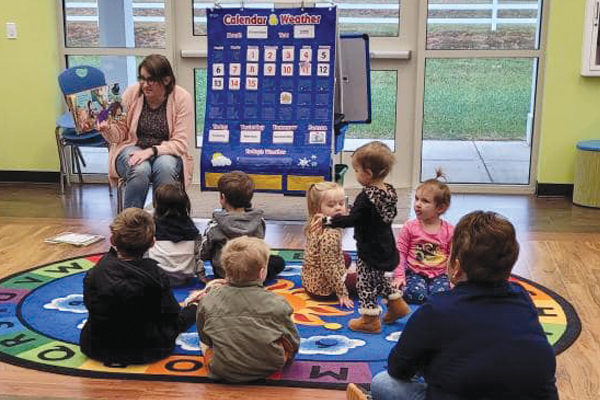
Grade-Specific Activities:
K-2 (Focus on Engagement and Exploration):
- Art: Paper Plate Solar System Mobile: Spark creativity with a solar system mobile made from paper plates. Decorate the plates as the sun, moon, and Earth. Discuss their positions during the eclipse and how they move in relation to each other.
- Math: Size Matters! (Math/Science): Turn eclipse learning into a fun math lesson. Cut out different sized circles representing the sun, moon, and Earth. Let students play with size comparisons and see which can cover the others. Discuss concepts like diameter and how the moon's size relative to the sun contributes to the eclipse.
- Science: Pinhole Viewer for Safe Viewing (Science/Technology): Introduce students to a simple scientific tool – the pinhole viewer. Using a cardboard box, aluminum foil, and a pin (with adult supervision!), help them create their own viewers and explain how they allow safe viewing of the sun's magnified image (not looking directly at the sun itself).

3-5 (Dive Deeper into Concepts):
- Reading: Fact Hunt! (Reading/Science): Challenge students' reading comprehension skills with a non-fiction passage about eclipses. They can create a fact chart summarizing key points like types of eclipses (total, partial, annular) and the scientific explanation of how they occur. Encourage them to find interesting details and illustrations to enhance their charts.
- Social Studies: Eclipses Around the World (Social Studies/Science): Broaden perspectives by exploring different cultures and their myths or stories about eclipses. Students can research online or in libraries, then share their findings in a class presentation. This can spark discussions about cultural interpretations of celestial phenomena and how science can explain them.
- Science: Building a Model Solar System (Science/Technology): Nurture scientific thinking and spatial reasoning with a model solar system project. Students can design and build a model using recycled materials or craft supplies, focusing on the relative positions of the sun, moon, and Earth during an eclipse. This activity helps visualize the celestial mechanics at play.
Remember:
- Differentiation is Key: Adapt the complexity of activities to suit the specific grade level and student abilities. Provide options for students with varying learning styles and interests.
- Spark Curiosity: Encourage creativity and student exploration within the activities. Let them ask questions, experiment with ideas, and make connections between the activities and their existing knowledge.
- Springboard for Learning: Use these activities as a launchpad for further discussions and learning about the solar system, space exploration, and the wonders of our universe.
Middle School/Intermediate (6-8):
These activities cater to the increased critical thinking and project-based learning skills of students in grades 6-8. Remember, safe viewing with approved solar eclipse glasses remains a priority.
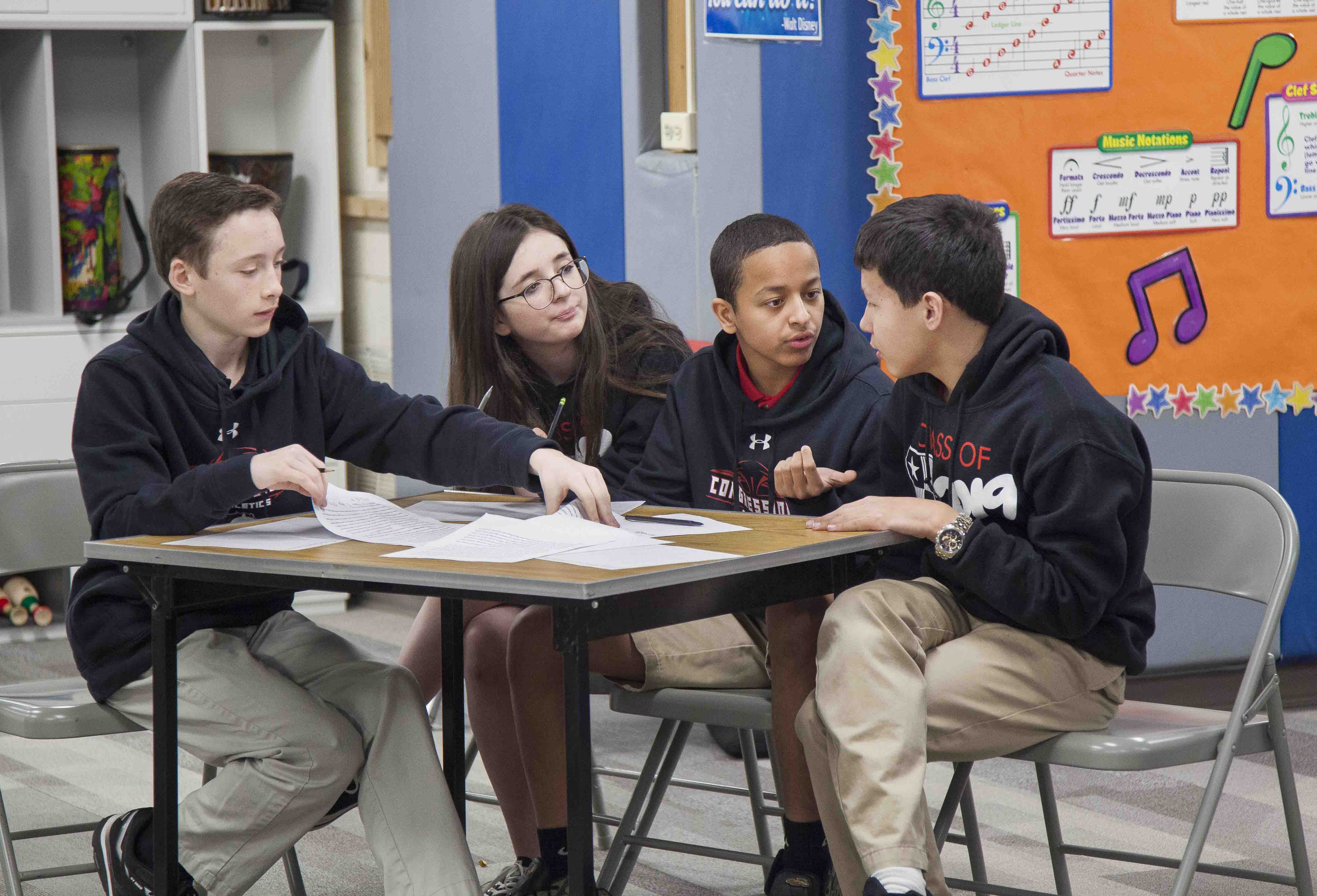
Cross-Curricular Activities:
- The Great Eclipse Debate (Science/Language Arts): Divide the class into teams representing scientists from different historical periods. Each team researches eclipses from their assigned period and debates the prevailing scientific understanding at that time. This activity encourages research, persuasive writing, and public speaking skills.
- Eclipse Photography Challenge (Science/Technology/Art): Plan a safe eclipse viewing event (weather permitting) and challenge students to capture the eclipse using photography techniques. They can experiment with different filters, shutter speeds, and angles to document the phenomenon. After the event, organize a photo presentation and discussion about the captured images.
Grade-Specific Activities:
6th Grade (Focus on Understanding Mechanics):
- Math: Predicting the Path (Math/Science): Introduce students to the concept of the path of totality, the area on Earth experiencing a total eclipse. Using online eclipse path prediction tools and basic math skills (coordinates, distances), have them research and predict the path for the April 8th eclipse. This incorporates math applications in a real-world context.
- Science: Creating a Scaled Model (Science/Technology): Take model building a step further by creating a scaled model of the Earth-Moon-Sun system during an eclipse. Students can calculate the relative sizes and distances of the celestial bodies and use appropriate materials to build a representation. This activity reinforces their understanding of scale and celestial mechanics.
- Social Studies: Historical Eclipses and their Impact (Social Studies/Science): Explore historical accounts of eclipses and their impact on different cultures. Students can research specific events like the Thales eclipse prediction (585 BC) or the role of eclipses in ancient Chinese astronomy. This activity broadens their understanding of the historical and cultural significance of eclipses.
7th Grade (Focus on Data Analysis):
- Science: Analyzing Historical Eclipse Data (Science/Technology): Utilize online astronomy databases to access past eclipse data (like duration, location). Students can work in small groups to analyze this data and identify patterns or trends. Encourage them to create graphs, charts, or presentations to visually represent their findings.
- Language Arts: Eclipse Mythology and Storytelling (Language Arts/Science): Delve into the rich tapestry of myths and stories surrounding eclipses from various cultures. Students can choose a specific myth and analyze its symbolism, connection to celestial events, and its cultural context. This activity encourages reading comprehension, critical thinking, and creative writing to reimagine the chosen myth.
- Computer Science: Simulating Eclipses with Coding (Computer Science/Science): Introduce basic coding concepts with a fun project. Students can learn a beginner-friendly coding language like Scratch to create a simple simulation of an eclipse. By manipulating code, they can experiment with different positions and sizes of celestial bodies, visualizing the effects on the eclipse.
8th Grade (Focus on Project-Based Learning):
- Science: Designing a Research Project (Science/Research): Encourage independent research skills by letting students design their own eclipse research projects. They can choose topics like the effects of eclipses on animal behavior, the history of eclipse prediction methods, or the cultural significance of eclipses in a specific region. This activity allows them to delve deeper into a topic of interest and develop research, presentation, and analysis skills.
- Art & Technology: Creating an Eclipse Awareness Campaign (Art/Technology/Science): Combine creativity and science communication. Students can brainstorm and design a campaign to raise awareness about the upcoming eclipse. They can create posters, infographics, or even short videos explaining the science behind the eclipse and emphasizing safe viewing practices.
- Engineering: Building a Solar Eclipse Viewer (Engineering/Science): Challenge students' engineering skills by designing and building a safe solar eclipse viewer. They can research existing models, explore options like a Mylar filter viewer or a projection box, and utilize readily available materials to create a functional prototype.

High School (9-12)
These activities cater to the advanced analytical and research skills of high school students (grades 9-12). Safe viewing with approved solar eclipse glasses remains crucial.
Cross-Curricular Activities:
- Citizen Science Project: Eclipse Data Collection (Science/Technology/Math): Channel students' scientific curiosity into a citizen science project. Partner with organizations like NASA's Citizen Science Eclipse program (https://science.nasa.gov/eclipses/citizen-science/) where students can collect and submit valuable data on the eclipse, like observations of the corona or temperature changes.
- The Physics of Eclipses (Physics/Science/Math): Dive deeper into the physics behind eclipses. Students can explore topics like the role of gravity, light diffraction, and solar prominence activity during the eclipse. Encourage them to research scientific papers, analyze data sets, and present their findings in a scientific poster format.
Grade-Specific Activities:
9th Grade (Focus on Foundational Concepts):
- Science: Spectral Analysis of the Sun's Corona (Science/Technology): Introduce the concept of spectroscopy and its role in studying celestial objects. Students can research how astronomers use spectroscopes to analyze the composition of the sun's corona, visible only during a total eclipse. This activity helps them connect eclipse observations with broader astrophysical concepts.
- Math: Calculating Eclipse Geometry (Math/Science): Challenge students with a geometry application related to the eclipse. They can research the mathematical calculations used to predict the path of totality, duration of the eclipse, and the umbra and penumbra sizes. By manipulating formulas and data, they can deepen their understanding of the eclipse geometry.
- History: Eclipses and Scientific Progress (Science/History): Explore historical eclipses that have significantly impacted scientific progress. Students can research events like the 1919 solar eclipse that confirmed Einstein's Theory of Relativity or the role of eclipses in the development of telescopes. This activity fosters connections between historical events and scientific advancements.
10th Grade (Focus on Data Analysis and Modeling):
- Science: Analyzing Past Eclipse Data with Advanced Statistics (Science/Math): Take data analysis to the next level. Students can access advanced astronomy databases and utilize statistical software (like R or Python) to analyze historical eclipse data. Encourage them to identify correlations between eclipse parameters (like duration, location) and other celestial events.
- Geography: The Global Implications of Eclipses (Geography/Science): Broaden the perspective by exploring the global impacts of eclipses. Students can research how eclipses affect different regions, considering factors like weather patterns, animal behavior, and even power grid fluctuations. This fosters an understanding of the global interconnectedness around astronomical events.
- Computer Science: Developing an Eclipse Prediction App (Computer Science/Science): Challenge students' coding skills with a practical project. They can learn an intermediate coding language like Python to develop a mobile app that predicts eclipse timings and path based on user location. This combines science knowledge with app development skills.

11th & 12th Grade (Focus on Independent Research and Project Development):
- Research Project: Exploring a Specific Eclipse-Related Topic (Science/Research): Encourage independent research by letting students choose a topic related to the April 8th eclipse or eclipses in general. They can delve into areas like the impact of eclipses on space weather, the potential for future eclipse tourism, or the cultural significance of eclipses in a specific indigenous community. This fosters deep research skills and project development capabilities.
- Science & Engineering: Designing a Safe Community Viewing Event (Science/Engineering): Combine scientific knowledge with public engagement skills. Students can research safe eclipse viewing practices and design a strategy for conducting a community viewing event at the school or a local park. They can involve local astronomy clubs, create awareness materials, and ensure proper viewing equipment for safe observation.
- Art & Technology: Creating an Immersive Eclipse Experience (Art/Technology/Science): Spark creativity and engage technology. Students can explore and utilize virtual reality (VR) technologies to design an immersive eclipse experience. They can create a VR environment simulating the eclipse observation from different regions or offer a 360-degree view of the celestial dance.
Hopefully some of these ideas prove useful as you and your classes explore the eclipse!

